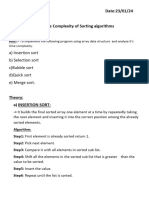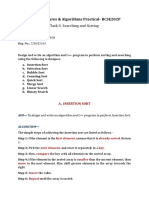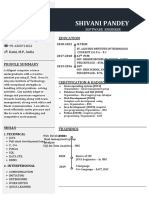0% found this document useful (0 votes)
25 views36 pagesAda Practical File
The document outlines various sorting algorithms implemented using arrays, including Merge Sort, Quick Sort, Bubble Sort, Radix Sort, Selection Sort, Heap Sort, Bucket Sort, and Shell Sort. Each algorithm is described with its steps, time complexity, and includes source code examples in C++. The document serves as a comprehensive guide for understanding and analyzing these sorting techniques.
Uploaded by
ojasbhatia13Copyright
© © All Rights Reserved
We take content rights seriously. If you suspect this is your content, claim it here.
Available Formats
Download as PDF, TXT or read online on Scribd
0% found this document useful (0 votes)
25 views36 pagesAda Practical File
The document outlines various sorting algorithms implemented using arrays, including Merge Sort, Quick Sort, Bubble Sort, Radix Sort, Selection Sort, Heap Sort, Bucket Sort, and Shell Sort. Each algorithm is described with its steps, time complexity, and includes source code examples in C++. The document serves as a comprehensive guide for understanding and analyzing these sorting techniques.
Uploaded by
ojasbhatia13Copyright
© © All Rights Reserved
We take content rights seriously. If you suspect this is your content, claim it here.
Available Formats
Download as PDF, TXT or read online on Scribd
/ 36























































































